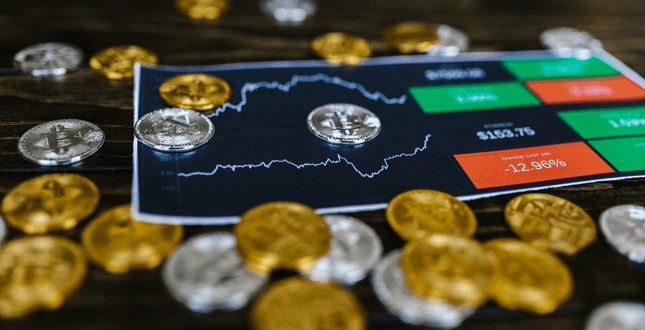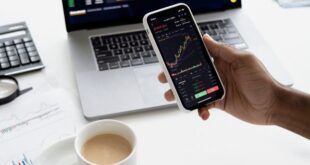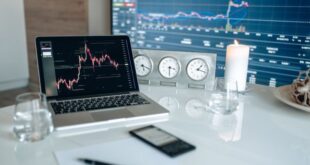One of the most common and potentially disastrous pitfalls that Forex traders face is the Trader’s Fallacy. This is a major danger of employing any form of manual Forex trading technique. Also known as the “maturity of chances fallacy” or the “gambler’s fallacy” from the field of game theory.
For the Forex trader, the Trader’s Fallacy presents itself in a variety of tempting shapes. Any seasoned player or Forex trader would be able to relate to this. It’s the firm belief that the odds of a black result on the following spin of the roulette wheel are higher due of the previous five red ones. If a trader or gambler starts to think the “table is ripe” for a black, and so raises his stake to take advantage of the “improved odds of success,” he has fallen victim to trader’s fallacy. This is taking the first step toward “Trader’s Ruin” and diving headfirst into the abyss of “negative expectation.”
The term “expectancy” is used in the field of statistics to describe a basic idea. For foreign exchange traders, profitability essentially boils down to whether or not a certain deal or sequence of trades is expected to result in a net profit. In the context of foreign exchange (Forex), positive expectation means that, on average and across many transactions, it is more likely that you will win money than you will lose using any given Forex trading technique.
When it comes to gambling or trading foreign currencies, “Traders Ruin” refers to the statistical certainty that the player with the higher bankroll is more likely to finish up with ALL the money. In the long run, even if the odds are in the trader’s favor, he will lose everything to the Forex market because its bankroll is effectively endless. Fortunately, there are measures the Forex trader may do to avoid this. I have written extensively on the topics of Positive Expectancy and Trader’s Ruin, so I encourage you to check out my previous pieces for more detail.
The Classic Case of the Trader’s Error
The gambler’s fallacy is the irrational belief that the next outcome of a seemingly random or chaotic process is more likely to be different from the previous one. This can happen when, for example, seven consecutive heads are produced by a coin toss or when the Forex market experiences an unusually long streak of gains or losses. The odds of winning a toss of the coin are always 50/50 since randomness ensures that it will be a fair toss. Even after seven consecutive heads, the probability of the following flip being heads remains unchanged at 50%. The next flip might go any way for the gambler, but the chances are still about even.
In an effort to increase his chances of winning on the following flip, the gambler would typically increase his wager, so compounding his first mistake. THE TRUTH IS OPPOSITE OF WHAT HE SAYS. If a gambler keeps placing the same high-stakes wagers, eventually he will run out of money, according to the odds. This turkey can only be saved by an even less likely streak of unbelievable good luck.
The foreign exchange market is not truly random, but it is chaotic, and there are so many factors at play that accurate prediction is now impossible with available data. Traders should focus on the odds of known events. This is where research into the market’s fundamentals and other influences, as well as the results of technical analysis of market charts and patterns, come into play. Many investors spend tens of thousands of dollars and countless hours poring through charts and patterns in the market in an attempt to foretell its future moves.
Most market participants are familiar with the numerous patterns that may be utilized to anticipate Forex market movements. Names for these occurrences on charts can be rather colorful, such as “head and shoulders,” “flag,” “gap,” and “engulfing” and “hanging man” formations for candlestick charts. By studying these trends over extended periods of time, it’s possible to anticipate the “likely” direction and even the value in which the market will shift. One may use this fact to their advantage by creating a Forex trading strategy.
The key is to employ these patterns with a level of mathematical discipline that most traders lack.
A trader may learn, through extensive market observation and chart pattern analysis, that seven out of ten times the market will rise after a “bull flag” formation (these are “made up numbers” just for this example). Therefore, the trader understands that going long on a bull flag has a high probability of success (about 70%) over the course of several transactions. His Forex trading signal is as follows. After determining his expected return, he may choose the account size, trade size, and stop loss amount that will guarantee a profitable outcome from this transaction. The trader can expect long-term success if he adopts this trading strategy and adheres to its guidelines.
The trader will not necessarily win seven out of every ten deals even if they have a 70% success rate. It’s not unheard of for a trader to suffer 10 or more consecutive setbacks. The Forex trader is in the most danger when the strategy suddenly stops producing results. Even the most optimistic tiny trader might get despondent after suffering a string of losses; after all, we are just human, and failure stings! Indeed, if we stick to our plan and are subsequently stopped out of transactions that would have ultimately been lucrative, we may end up losing money.
After a string of losses, if the Forex trading signal reappears, a trader has numerous options. Poor responses: To make up for his losses from lost transactions, the trader may decide to increase the size of his trades on the theory that his luck is “due for a change.” A trader can make a bet and then stick with it even if it goes against him, absorbing more losses in the hopes of making a profit. These are only two examples of how traders might lose money by succumbing to the Trader’s Fallacy.
Either of the two acceptable responses calls for the “iron willed discipline” that is so lacking among traders. You may either “believe the statistics” and enter the trade based on the signal as usual, cutting your losses short if the deal goes against you, or you can opt not to trade this pattern and wait until you can be statistically convinced that the pattern’s likelihood has changed. In the long run, a trading’s account can only be filled with wins by employing the final two tactics discussed.
Automated Forex Trading Systems: The Answer to Human Fallacy
The Foreign Exchange (Forex) market is volatile and susceptible to a wide range of influences, all of which can affect the trader’s state of mind and therefore, their trading decisions. To avoid the temptation and frustration of attempting to combine the hundreds of variable aspects in Forex trading, a mechanical Forex trading system is one of the easiest methods to trade. The aggravation and uncertainty of Forex trading may be mitigated to a large extent by using Forex trading software systems based on Forex trading signals and currency trading systems with properly researched automated FX trading rules. The “discipline” to avoid Trader’s Ruin and Trader’s Fallacy is introduced by these automated Forex trading solutions, allowing users to finally reach positive expectation.
Mechanical trading software and automated Forex trading systems promote orderly trading. This limits drawdowns and permits profitable positions to continue to grow. It simplifies foreign exchange trading. The ordinary trader may try out these automatic Forex trading systems for up to 60 days without risk by opening a Forex trial account and reading some of the many good Online Forex Reviews available for these systems. The greatest of these programs will also provide a full refund if you are not satisfied. Traders may get advice on which Forex broker will work best with their preferred online Forex trading platform from a variety of sources. Most provide comprehensive assistance when creating a Forex practice account. Running the automated Forex trading software on the demo accounts may teach traders of all skill levels a great deal. This knowledge will assist you in selecting the most suitable Forex trading system software for your needs. Allow professionals to create successful systems, and focus on testing their effectiveness instead. After that, you can sit back and collect your winnings while Forex autotrading robots do all the hard work for you.
 Dekke Finance App Seputar berita aplikasi, trading dan keuangan
Dekke Finance App Seputar berita aplikasi, trading dan keuangan


